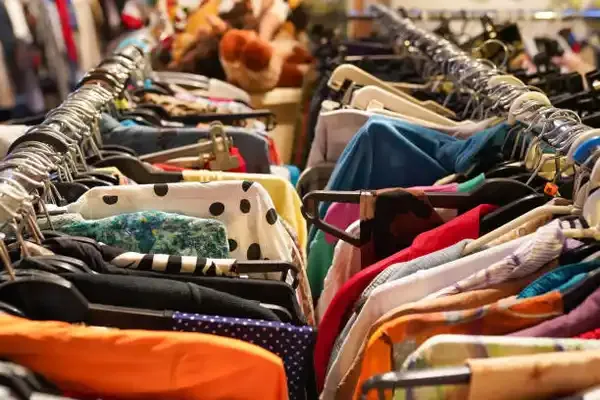Introduction
Clothing manufacturing is pivotal in the global fashion industry, encompassing a complex and multi-faceted process that transforms raw materials into finished garments. This article provides an in-depth exploration of the various aspects of clothing manufacturing, from the historical evolution of the industry to the latest innovations and sustainability practices. Delving into topics such as global supply chains, ethical considerations, and future trends, this article aims to offer a comprehensive overview of this dynamic sector and the challenges and opportunities it presents in today's ever-evolving market.
Clothing Manufacturing
Clothing manufacturing is the magical process that transforms fabrics into the stylish attire we proudly flaunt. It's like a fashion fairy tale unfolding in factories around the world. Clothing manufacturing is the art and science of creating garments on a large scale. It involves everything from designing to stitching, bringing your favorite clothes to life.
Historical Evolution of the Clothing Manufacturing Industry
The clothing manufacturing industry has come a long way from ancient looms to modern high-tech factories. It's fascinating to see how our fashion journey has evolved over time.
The Process of Clothing Manufacturing
Ever wondered how that trendy outfit of yours came to be? Let's peek behind the seams at the intricate process of clothing manufacturing.
i. Design and Development
This is where the magic begins. Designers sketch their creative visions, turning dreams into wearable art pieces that make heads turn on the runway.
ii. Material Sourcing and Selection
Choosing the right fabrics is crucial. From luxurious silk to comfy cotton, each material adds its unique touch to the final garment, ensuring you feel fabulous when you slip it on.
iii. Pattern Making and Cutting
Patterns are like the blueprint of fashion. Skilled hands meticulously cut fabrics following these patterns, ensuring that every piece fits together perfectly like a stylish puzzle.
iv. Sewing and Assembly
The heart of clothing manufacturing. Seamstresses work their magic, stitching fabrics together with precision and care, creating the beautiful garments that fill our closets.
Trends and Innovations in Clothing Manufacturing
Just like fashion trends, the clothing manufacturing industry is always evolving. Let's explore the latest innovations that are shaping the way our clothes are made.
i. Automation and Robotics in Manufacturing
Robots are not just sci-fi anymore. They're weaving their way into clothing factories, streamlining processes and increasing efficiency like never before.
ii. Digital Printing and Customization
Say goodbye to mass-produced outfits. Digital printing technology allows for personalized designs and unique patterns, ensuring you stand out in a crowd.
Sustainable Practices in Clothing Manufacturing
Fashion doesn't have to cost the earth. Discover how the clothing manufacturing industry is embracing sustainability to create a brighter, greener future.
i. Recycling and Upcycling
One person's trash is another person's trendy outfit. Recycling and upcycling old fabrics reduce waste and give new life to pre-loved clothes.
ii. Eco-Friendly Materials and Processes
From organic cotton to plant-based dyes, eco-friendly materials and processes are making waves in the fashion world. Who knew saving the planet could look so stylish?
Global Supply Chain and Outsourcing in Clothing Manufacturing
i. Overview of the Global Supply Chain
When it comes to making that cute top you just ordered online, it's a whole global affair. From raw materials sourced in one country to manufacturing in another, and finally shipping to your doorstep, the clothing supply chain is like a fashion world road trip.
ii. Impact of Outsourcing on the Industry
Outsourcing in clothing manufacturing has been a game-changer. It's like getting your trendy jeans made by the cool kids in school – cheaper, faster, and with all the latest styles. But it's not all rainbows and unicorns, as outsourcing can also bring challenges like ethical concerns and quality control issues.
Challenges and Opportunities in the Clothing Manufacturing Industry
i. Labor Issues and Working Conditions
Imagine sewing a thousand buttons a day or stitching twenty zippers an hour – that's the reality for many garment workers. Labor issues and working conditions in clothing manufacturing can be as trendy as the latest fashion line, with concerns ranging from fair wages to safe workplaces.
ii. Market Competition and Fast Fashion
In the fast-paced world of clothing manufacturing, it's a race to the runway. Market competition and fast fashion trends mean that what's hot today might be so last season tomorrow. Keeping up with the latest styles and trends while balancing quality and sustainability is like walking a fashion tightrope.
Ethical Considerations in Clothing Manufacturing
i. Fair Trade and Ethical Sourcing
Fair trade isn't just for coffee – it's a fashion statement too. Ethical sourcing and fair trade practices in clothing manufacturing ensure that your favorite pair of jeans isn't made at the expense of someone else's well-being. It's like wearing a badge of honor for being a conscious consumer.
ii. Transparency and Social Responsibility
The fashion industry isn't all glitz and glamour – there's a growing demand for transparency and social responsibility. From knowing where your clothes were made to understanding the environmental impact of production, being a socially responsible fashionista is the new black.
Future Outlook for Clothing Manufacturing
Say hello to the future of fashion – where robots might be stitching your next outfit. Technological advancements in clothing manufacturing are shaking up the industry, from 3D printing to AI-powered design tools. It's like Project Runway meets The Matrix.
The future of fashion isn't just about looking good – it's about doing good too. As consumers demand more sustainable and ethical practices, the clothing manufacturing industry is shifting towards a greener future. It's like recycling old trends into new beginnings, one eco-friendly outfit at a time.
Conclusion
The world of clothing manufacturing continues to evolve, driven by technological advancements, changing consumer demands, and a growing emphasis on sustainability and ethical practices. As the industry navigates through challenges and embraces opportunities for innovation, one thing remains clear: the art and science of clothing manufacturing will always be integral to the fashion landscape, shaping the way we dress and express ourselves for generations to come.










0 Comments